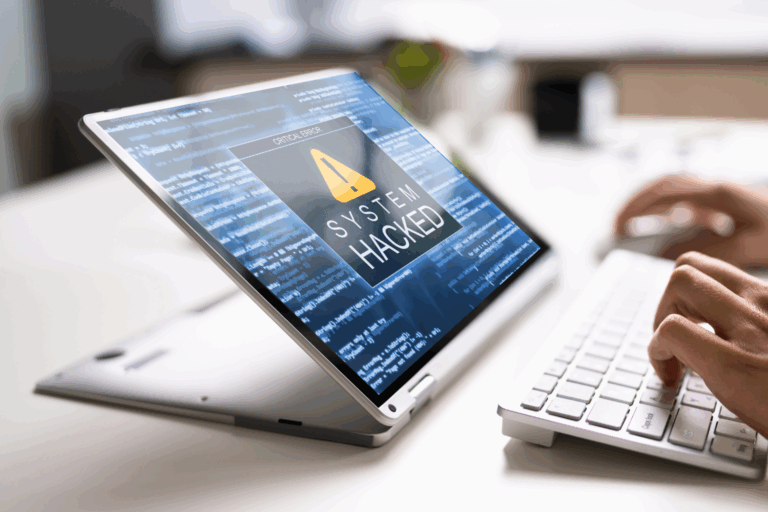Top 10 fintech cybersecurity best practices for 2025
Between emerging technologies, increasingly sophisticated threats, and tightening regulatory demands, staying secure in fintech means building cybersecurity into every layer of your operations. Understanding the top fintech cybersecurity best practices is essential to building resilience and staying ahead.
Global cybercrime is projected to cost $10.5 trillion in 2025, and that figure is expected to exceed $15 trillion by 2030. This means one thing for fintech companies: it’s time to rethink cybersecurity from the ground up. Traditional approaches are no longer enough. In a sector where speed and trust define success, those who adapt fastest will lead the way.

2025: A year of major shifts in fintech cybersecurity
This year marks a critical turning point in fintech cybersecurity. A global study of IT leaders at companies across the US, UK, EU, and APAC reveals a troubling trend:
- 79% report increased malware attacks.
- 75% have seen a rise in phishing.
- 68% cite more frequent ransomware and DDoS attacks.
These numbers confirm that the threat landscape is growing and it’s evolving. New technologies bring new risks. Quantum computing, for example, threatens to dismantle current encryption standards. With processing power millions of times greater than today’s systems, quantum machines could crack RSA and ECC encryption in minutes, posing a serious challenge to financial institutions that rely on these standards for secure communication.
At the same time, regulations are tightening. The Digital Operational Resilience Act (DORA), which came into force in January 2025, mandates stronger and more unified ICT risk management across financial entities in the EU.
With threats accelerating and compliance requirements expanding, understanding and applying fintech cybersecurity best practices is no longer optional.
Top 10 fintech cybersecurity best practices for 2025
To operate confidently and securely in 2025 and beyond, these are our 10 essential practices for fintechs:
1. Prioritize proactive security measures
Cyber threats in fintech evolve too fast for a reactive approach. Instead of waiting for alerts or incidents, forward-thinking teams use offensive security tactics like threat hunting, red teaming, and real-time monitoring to identify vulnerabilities before attackers do.
Proactive security closes the gap between unknown threats and response time, reducing risk exposure significantly.
2. Apply security-by-design principles
Security must be embedded from the first line of code. In fintech products, where financial data and transactions are the core, building with security-by-design reduces technical debt and limits the need for costly fixes later.
Integrating threat modeling and secure architecture reviews into early development cycles ensures that security scales with your product.
3. Build dynamic, adaptable defenses
Cyberattacks are never static, so your defenses shouldn’t be either. Static firewall rules and rigid protocols are easy for attackers to work around.
Adaptive security systems—those that evolve based on user behavior, threat intelligence, and real-time inputs—offer better protection against advanced persistent threats and emerging attack vectors.
4. Think in terms of integrated strategy
Too many fintechs treat security as a separate function. But security isn’t just IT’s problem—it’s a business-wide concern and works best when it’s part of a unified system, not a patchwork of isolated tools or teams.
An integrated security strategy aligns technology, people, and processes across the entire organization. It ensures visibility across attack surfaces, enables faster response, and reduces the risk of oversight. Attackers look for gaps to exploit, so a cohesive, end-to-end approach is essential for resilience.
5. Go beyond compliance requirements
Being compliant doesn’t mean being secure. Regulatory frameworks are essential—they set important baselines—but they shouldn’t be the end goal. Most are reactive by nature, designed to address known risks. That leaves companies exposed to new and evolving attack methods.
Cyber attackers don’t care if you’re certified; they look for the gaps that compliance can’t see. That’s why true protection comes from going beyond audits and implementing risk-based, context-aware security controls that match your specific environment and threat profile.
6. Secure both internal and external attack surfaces
It’s natural for fintech companies to focus more on internal security—it’s where they have the most visibility and control. But overlooking the external attack surface can be a costly mistake. Third-party tools, platforms, and integrations often serve as gateways into your systems, and if they’re not secure, neither are you.
From payment gateways to open banking APIs, every external connection introduces potential risk. And because these systems fall outside your direct control, they demand even closer scrutiny. Vetting vendors, enforcing strong access policies, and continuously monitoring for changes in exposure are key steps to protecting your business—and your customers—from vulnerabilities that may lie beyond your perimeter.
7. Evolve quickly with the threat landscape
Cyber threats move fast and your response needs to be even faster. Static defenses and annual updates no longer cut it in an environment where new vulnerabilities emerge daily.
Just as fintechs strive to innovate quickly and adopt the latest technologies to stay ahead of the competition, that same agility should apply to cybersecurity. The faster you can adapt your defenses, the better you can protect your systems, data, and users. Staying ahead means integrating real-time threat intelligence, updating controls regularly, and having the flexibility to pivot your security posture as threats evolve.
8. Address insider threats proactively
One of the biggest vulnerabilities in any organization is people. Whether it’s through human error, negligence, or malicious intent, insider threats are a leading cause of data breaches. In this fast-paced environments, where employees often have access to sensitive data and critical systems, even a small mistake can have serious consequences. Misconfigured permissions, weak passwords, or an accidental click on a phishing link can open the door to major security incidents.
That’s why proactive measures are essential. This includes enforcing least-privilege access, monitoring user behavior for anomalies, and building a culture of security awareness across teams. Technology alone can’t solve the insider threat—addressing the human factor is just as critical.
9. Regularly test your defenses
Security isn’t a one-and-done exercise. Threats evolve, systems change, and new vulnerabilities emerge all the time. That’s why regular testing—beyond the occasional audit—is essential.
Simulating real-world attacks across all layers of your organization helps reveal blind spots before attackers find them. This includes not only penetration testing and vulnerability assessments, but also testing your resilience against phishing, social engineering, and even physical intrusions. A comprehensive, hands-on approach ensures that your defenses hold up in practice and not just on paper.
10. Work with experts who understand fintech
Fintech startups often operate with lean teams and limited budgets, and traditional, resource-heavy security frameworks are often inefficient. The speed of development, regulatory complexity, and sensitivity of financial data require a specialized approach. What’s needed are practical, agile solutions that align with fintech workflows and scale as the business grows.
Partnering with experts who understand the fintech landscape—its architecture, compliance demands, and operational realities—makes a difference. They won’t just apply best practices. They’ll apply the right ones, in the right way, for your business.
Secure your fintech solutions with Clovr Labs
Cybersecurity in fintech is not a one-size-fits-all discipline. It’s a complex, ever-evolving challenge that requires a nuanced approach tailored to each company’s technology stack, regulatory landscape, and risk profile.
Clovr Labs specializes in helping fintechs navigate this complexity with precision. Our expertise spans everything from security-by-design and threat modeling to 360º attack surface assessments and non-linear defense systems that evolve as attackers do.
Because we’re fintech insiders, we understand the challenges from the inside out—and we design security strategies that match your pace, your business model, and your future.
Evaluate your company’s operations and security framework with a tailored consultation from Clovr Labs today.







